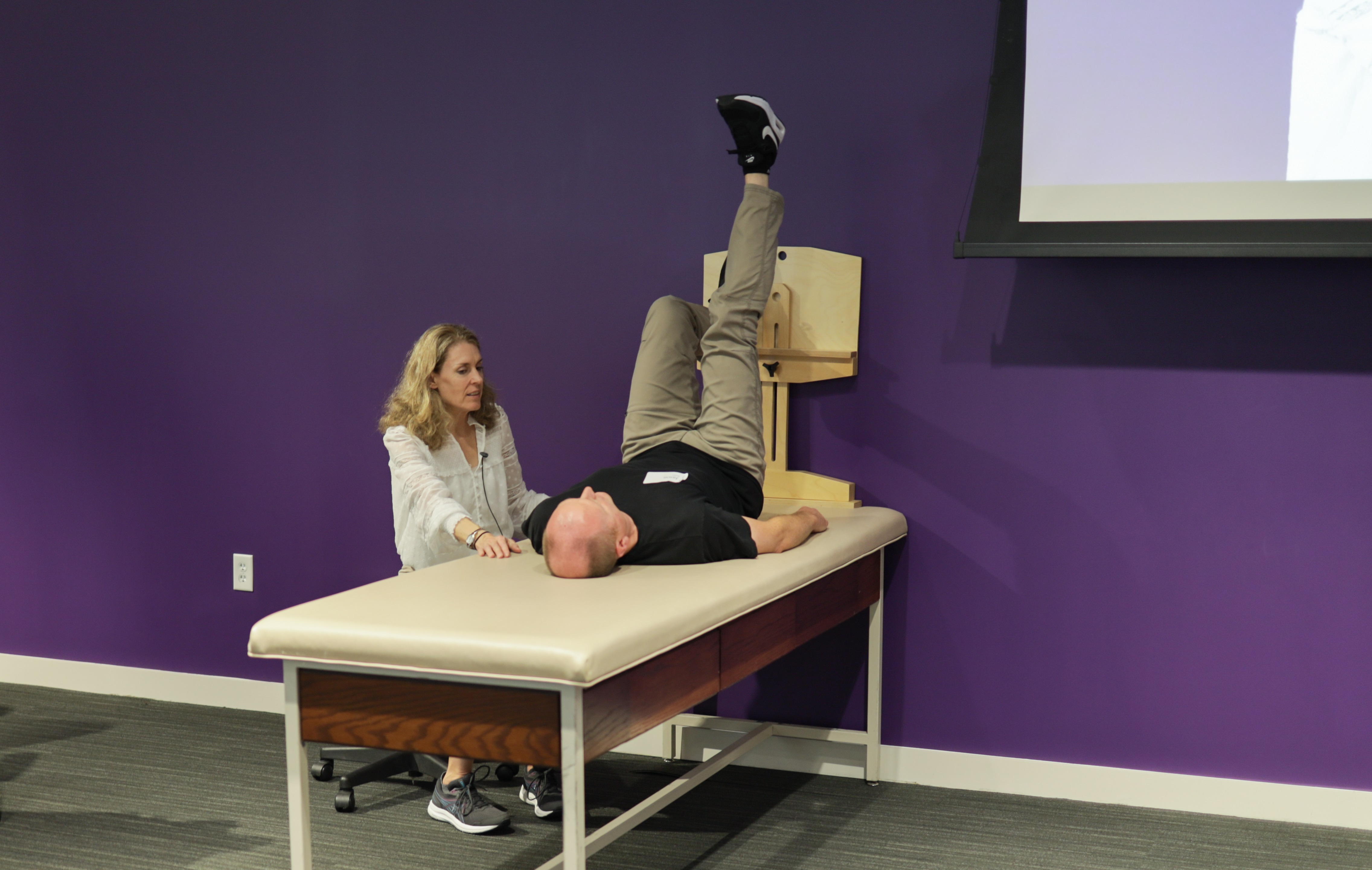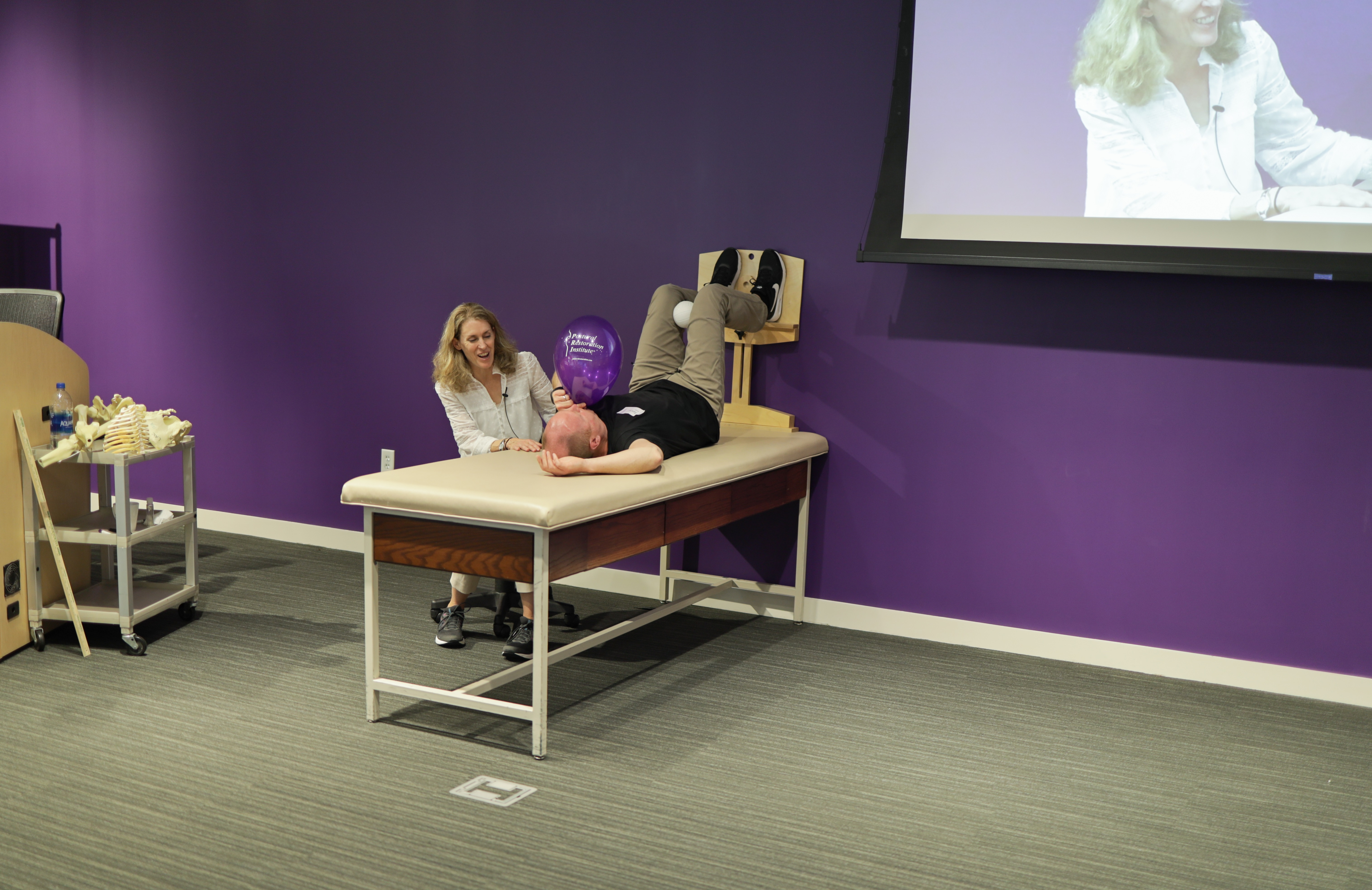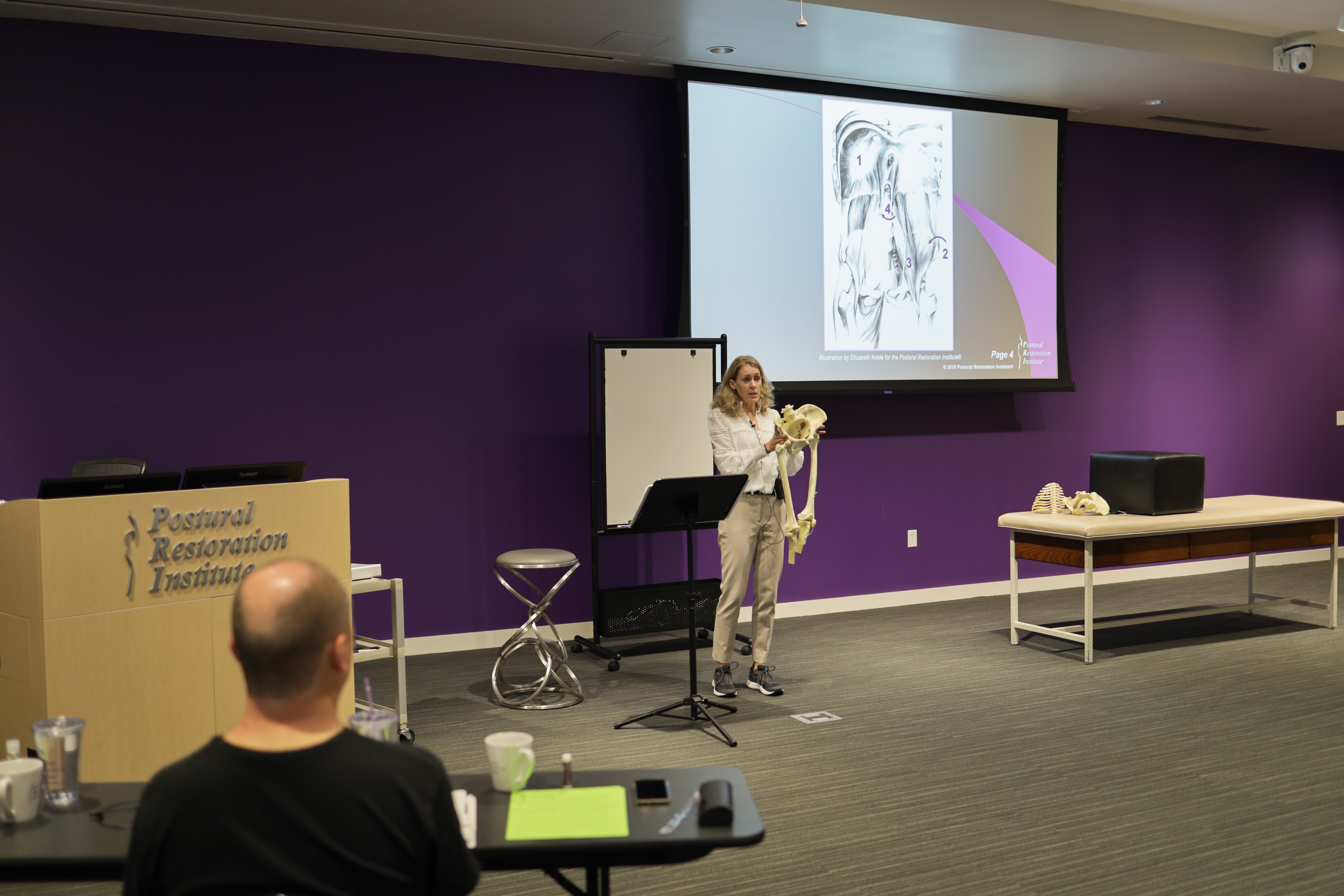As always, I enjoyed my weekend at the home of PRI in Lincoln, NE to present Postural Respiration to an in-person and virtual group with my friend and colleague Jen Platt, PT, PRC. Although virtual learning can be a challenging format to gauge the interest and energy of attendees, such was not the case with this group, who offered many questions, insightful comments, and thumbs-up to relay to this instructor “Yes, we got this concept.” Our in-person squad was instrumental in helping illustrate concepts, serving as models for the PRI tests and non-manual and manual techniques. A huge thank you to our models Hailey Beasley, PTA, Jason Bushie, ATC, Ellen Kindelsperger, DC, and Tasuku Kurane, ATC, for your willingness to express what you sensed during and following each technique.

As anyone who has taken Postural Respiration knows, there is a great deal of research and conceptual material to sift through, contemplate, and consider. What is quickly understood, by practitioners both new to the science and with numerous courses under their belt, is that the PRI approach can be applied to any and all patients/clients. Its techniques offer a game-changing approach to care. The many lab sessions provide experiential learning and an opportunity to practice how to present and explain the how and why of assessment and treatment with the “patient” in front of you.


It is not enough to simply move air in and out of the thorax. All humans accomplish this, one way or another, to stay alive. It is the ability to direct that bolus of air into different regions of the thorax that determines how variable and efficient our movements may be, how we experience the environment around us, and how well we rest at night. This ability becomes compromised the longer we are constrained by the human’s natural asymmetries that become reinforced by static postures and repetitive activities of daily life. Ensuring the balanced roles of the left and right hemi-diaphragm, that of both posture and respiration, requires an understanding of how to maintain each diaphragm’s zone of apposition, inhibit deleterious muscle over-activity, and re-establish a sense of expansion of the posterior mediastinum from which new, healthier patterns of movement can emerge. These foundational concepts are what Postural Respiration is all about.

Thank you to all attendees for taking time out of your summer to challenge your thinking and grow professionally. It was nice to see many newcomers to the science as well as veterans such as Brittany LaFountaine, DPT, PRC, and Joe Siracusano, DPT. I encourage all of you to keep asking questions and seeking answers, through the PRI website resources, dialogue with fellow clinicians, PRIVY, and the many courses that PRI has to offer


